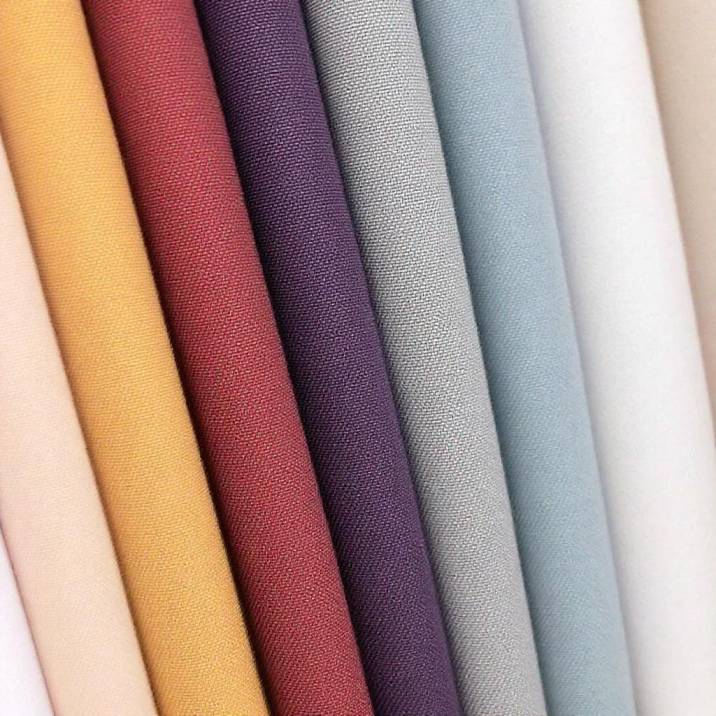Soft Touch: The Ultimate Guide to Comfortable Fabrics
Choosing the right fabric is vital for achieving comfort in both clothing and home textiles. With a plethora of options available, understanding the unique properties of various fabrics can significantly enhance your daily experience. From the breathable softness of cotton to the insulating warmth of wool, each fabric serves a specific purpose that can cater to your lifestyle and preferences. Whether you’re dressing for a hot summer day or snuggling under a cozy blanket in winter, the right fabric can make all the difference. This article will help you explore your choices to discover the perfect materials for your comfort.
Material Matters
- Natural Fabrics: Derived from natural sources like plants and animals, natural fabrics such as cotton, linen, and wool are breathable, soft, and comfortable. They offer moisture-wicking properties, making them suitable for sensitive skin and various climates.
- Synthetic Fabrics: Man-made materials like polyester, nylon, and acrylic are known for durability, flexibility, and ease of care. Due to their strength, water resistance, and quick-drying nature, these fabrics are often used in activewear.
- Blended Fabrics: Blended fabrics combine natural and synthetic fibers and offer the benefits of both, including comfort, durability, and improved performance.
Choosing Wisely
- Climate and Season: The climate plays a crucial role in fabric selection. linen and Cotton are great choices for warm weather due to their lightweight nature, breathability, and ability to absorb moisture. In contrast, heavier fabrics such as wool and flannel provide warmth during colder months.
- Skin Sensitivity: Individuals with sensitive skin should prioritize hypoallergenic fabrics. Natural fibers like organic cotton & bamboo are typically milder on the skin, minimizing irritation and the risk of allergic reactions. It’s best to avoid synthetic fabrics that may lead to discomfort or itching.
- Activity Level: Consider the fabric’s suitability for your daily activities. Moisture-wicking and stretchy materials like polyester or spandex are ideal for sports or high-energy activities. Softer fabrics such as cotton or jersey are more comfortable for lounging or casual wear.
- Durability: Assess how often you plan to wear or use the fabric. If durability is a priority, opt for robust synthetic fabrics or tightly woven natural fibers that withstand wear and tear.
- Maintenance: Different fabrics have different care requirements. Select fabrics that match your preferences for washing, drying, and ironing. Polyester is low-maintenance, while delicate fabrics like silk may require special handling.
- Aesthetic Appeal: Lastly, consider the look and feel of the fabric. The right color, texture, and drape can enhance your style and overall comfort.
Sustainable Fabric Options
- Organic Cotton: It is cultivated without harmful pesticides or synthetic fertilizers, resulting in a soft, breathable, and environmentally friendly fabric. It supports sustainable farming practices and is biodegradable.
- Hemp: Hemp is renowned for its resilience and robustness, needing minimal water and no pesticides for cultivation. It naturally resists mold and UV light, making it a great choice for eco-conscious consumers looking for long-lasting fabrics.
- Tencel (Lyocell): Tencel is created from wood pulp obtained from sustainable sources and is manufactured using a closed-loop process that reuses both water and solvents. The fabric is soft, breathable, and biodegradable, which makes it a favored option for clothing and bedding.
- Bamboo: Bamboo fabric is derived from the rapidly growing bamboo plant, which needs minimal water and does not require pesticides. It is naturally antibacterial and moisture-wicking, offering comfort and sustainability in activewear and home textiles.
- Recycled Fabrics: Fabrics created from recycled materials, like PET bottles or old garments, contribute to waste reduction and support a circular economy. This option not only conserves resources but also minimizes environmental impact.
- Linen: Linen, sourced from the flax plant, is biodegradable and uses less water in its production compared to cotton. It is durable, breathable, and becomes softer with each wash, making it a sustainable choice for warm-weather clothing.
Keeping It Fresh
- Washing Instructions: Always check care labels for specific washing instructions. Most natural fabrics, like cotton and linen, can be machine washed, while delicate fabrics, like wool and silk, may require hand washing or dry cleaning.
- Temperature Settings: Use appropriate water temperatures when washing. Cold water is best for preserving color and preventing shrinkage, especially for darker or delicate fabrics. Warm water may be suitable for whites and heavily soiled items.
- Drying Techniques: Air drying is the gentlest option for most fabrics, helping to maintain their shape and prevent shrinkage. If using a dryer, select a low heat setting to avoid damage. Permanently remove items promptly to minimize wrinkles.
- Ironing Guidelines: Follow the recommended heat settings for each fabric type. Natural fibers typically handle higher temperatures, while synthetic fabrics may require lower heat. Using a steam iron can help remove wrinkles without direct heat contact.
- Stain Removal: Address stains promptly by blotting (not rubbing) the area with a clean cloth. Use fabric-specific stain removers or gentle detergents, and test on a small, inconspicuous area first to avoid discoloration.
- Storage Tips: Store fabrics in a cool, dry place and avoid overcrowding to prevent wrinkles. Consider using breathable garment bags or containers to protect seasonal items from dust and pests.
Summing Up
Choosing the right fabric is essential for enhancing your comfort in both clothing and home textiles. By understanding the various types of fabrics- natural, synthetic, and sustainable-you can make informed decisions that align with your lifestyle, preferences, and environmental values. Considering factors such as climate, skin sensitivity, and maintenance will ensure that you select fabrics that feel good and last longer. Your chosen fabrics can provide lasting comfort and satisfaction with the right care and maintenance. Ultimately, prioritizing fabric choice is essential for a more enjoyable and sustainable living experience.


